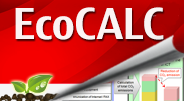-
Sustainability at Fujitsu Group
- Sustainability Management in the Fujitsu Group
- GRB(Global Responsible Business)Goals and Achievments for FY2022
- GRB(Global Responsible Business)Goals for FY2025
- Fujitsu's accessibility
- Stakeholder Engagement
- United Nations Global Compact
- SDG-related Activities in Fujitsu
- External Recognition and Awards
-
Global Responsible Business
- Environment
-
- Environmental Management
- The Fujitsu Group Environmental Vision on Climate Change
- Living in Harmony with Nature (Conservation of Biodiversity)
- Environmental Action Plan
- Environmental Data
- Environmental Communication
- Environmental Social Activities
- Disposal and Recycling of ICT products
- Environmental Considerations in ICT Products
- Governance
-
Data and Documents
- Fujitsu Group Sustainability Data Book 2024
- Social, Governance and Environmental data
- Independent Assurance Report

- GRI Standards / United Nations Global Compact (UNGC) principles Comparison Table
- SASB Standards Comparison Table
- Sustainability Information Disclosure Framework
- Link to regions responsible business reports
- Contact
- Sitemap
Environmental Impact Assessment Method for Solution Services
The Fujitsu Group quantitatively assesses how much the environmental burden can be reduced when customers adopt its solution services, using an environmental impact assessment method developed by Fujitsu Laboratories Ltd.
Basic Concept of Environmental Impact Assessment
The effect of adopting solution services is converted into the environmental effect.
The environmental effect of adopting solution services (e.g., paperless method (reduction in the use of paper), productivity improvement, work efficiency improvement) is quantitatively calculated and converted into CO2 emissions.

Assessment Target
Solution services can be considered to have their own life cycles consisting of multiple stages including planning, development, use, and disposal (e.g., renewal of the system). The present assessment method targets the use stage that take place at customers' locations.

Impact Assessment Factors (7 Factors)
Environmental impacts are quantitatively assessed for the following 7 factors:
| Environmental impact factor | Data required for calculating environmental impact | |||
|---|---|---|---|---|
| Resource consumption | Paper, CDs, documents, etc. | |||
| Movement of people | Airplanes, trains, buses, automobiles, etc. | |||
| Transport of goods | Small trucks, commercial-use trucks, rail freight, air freight, etc. | |||
| Office space | Space per person, server machine space, etc. | |||
| Warehouse space | General warehouses, refrigerated warehouses, etc. | |||
| Power consumption of ICT/ network equipment | Power consumption by ICT and network equipment | |||
| Data communication traffic volume | Volume of data trafficking the network (includes volume of data trafficking LAN) | |||

Steps of Environmental Impact Assessment
- Assess CO2 emissions by environmental impact factor
- Compare CO2 emissions-reducing factors and CO2 emissions-increasing factors before and after adopting solution services

Web-based Environmental Impact Calculation Tool
"EcoCALC-GX" a web-based tool for estimating environmental contribution, quantitatively evaluates the effectiveness of ICT in reducing environmental load with regard to CO2 emissions before and after the introduction of ICT. Using this environmental impact evaluation method, this tool calculates the amount of CO2 emissions reduced by ICT as the amount of contribution, and is used globally as an in-house tool by the Fujitsu Group. We are utilizing this tool to proactively promote environmental contribution amount calculations for business negotiations and new solutions.

EcoCALC, the Web tool for estimating environmental contributions that forms the basis of EcoCALC-GX, was awarded the Special Jury Prize at the Green IT Awards 2011 in 2011. This was in recognition of the innovative and creative use of the tool for visualizing CO2 reductions through ICT, as well as the active use of the tool in customer proposals.
Efforts for Standardization
The Fujitsu Group aims at contributing to the global efforts on reducing the environmental burden though diffusion of ICT. Standardization is one of such efforts, and Fujitsu actively participates in various activities at external organizations such as an international organization for standardization. Below are the examples of Fujitsu's contributions to standardizing the methods to evaluate the environmental burden reduction effect of ICT solution services.
- "FY2005 Guideline for Information and Communication Technology (ICT) Eco-Efficiency Evaluation"

This guideline includes the general framework, principles, and requirements relating to evaluation of the environmental impact of ICT and environmental burden reduced by adopting ICT. Formulation of the guideline was entrusted to the Japan Environmental Management Association for Industry by the Ministry of Economy, Trade and Industry, and was conducted by 8 ICT companies who are the members of the Japan Forum of Eco-efficiency and the University of Tokyo. The Fujitsu Group assisted the project by providing actual evaluation cases and by composing some parts of the guideline. - ITU-T (International Telecommunication Union, Telecommunications Standardization Sector) Recommendation "Methodology for the assessment of the environmental impact of information and communication technology goods, networks and services (L.1410)" (2013)

The present Recommendation stipulates an internationally universal framework of "Methodology for the assessment of the environmental impact of information and communication technology goods, networks and services", whose establishment was mainly promoted by the Ministry of Internal Affairs and Communications of Japan. The Fujitsu Group participated in "ICT and climate change (SG3 WP5)" of ITU-T as an associate rapporteur. - Fujitsu participates in the IEC/TC111 WG17 national committee and cooperates in the development of the international standard IEC63372"Quantification and communication of GHG emissions and emission reductions/avoided emissions from electric and electronic products, services and systems – Principles, methodologies and guidance."


